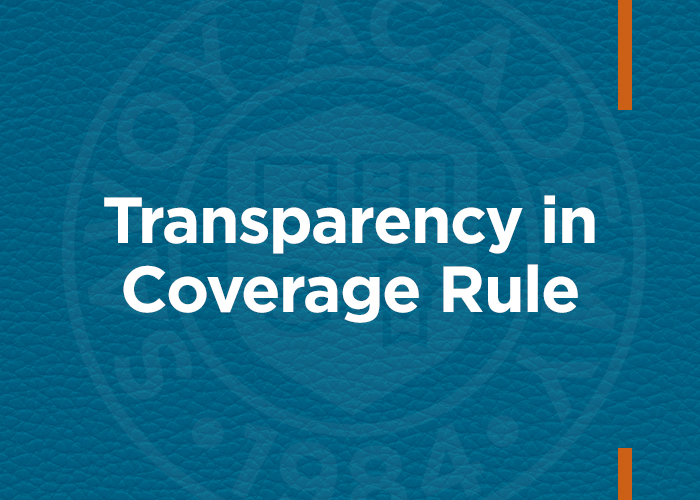Know the Facts | Transparency in Coverage Rule Resources
The Transparency in Coverage Rule creates several requirements for issuers and non-grandfathered group health plans, including employer-sponsored plans.

Published: 08.26.2022
The Transparency in Coverage Rule creates several requirements for issuers and non-grandfathered group health plans, including employer-sponsored plans. It is designed to help patients know how much their healthcare will cost in advance of treatment.
Machine-Readable Files | Carrier Guidelines
Beginning on July 1, 2022, the Transparency in Coverage Rule requires all size employers—fully-insured and self-insured—and health insurance issuers to disclose on a public website detailed pricing information in three separate machine-readable files (MRFs). This includes in-network rate files, allowed amount files and prescription drug files.For your reference, Savoy has prepared a document for Carrier Guidelines for Machine-Readable Files. Please click the link below to access.
Transparency in Coverage Regulations Overview
-
Federal transparency law applies to all size employers, and to fully and self-insured medical plans. Plan sponsors have a responsibility to make it available to all their participants.
-
Plan obligations will be phased over a 3-year period. 3 years with 3 phases of Transparency rules.
-
Phase 1: Publicly Available Machine-Readable Files
-
Phase 2: Consumer Price Transparency Tool
-
Online shopping tool that will allow consumers to see the negotiate rate between their provider and their plan, as well as personalized estimate of their out-of-pockets costs for around 500 of the most shoppable items and services.
-
-
Phase 3: Shopping Tools will be required to show the costs for the remaining procedures, drugs, durable medical equipment's and any other item or service consumers may need.
-
-
These regulations do not apply to grandfathered plans, excepted benefits (standalone vision, dental and hearing plans), Medicare/Medicaid, FSA, HRAs and HSAs, retiree only plans, or short-term limited duration plans
-
Delayed effective date July 1, 2022 (for plan years beginning on or after 1/1/22). Rule is effective for plan years beginning on or after January 1, 2022, on July 1,2022.
-
Anyone who has a 1/1/22 thru 7/1/22 plan year, their eff date is 7/1/22.
-
Plan starts of 8/1/22, 9/1/22, 10/1/22, 11/1/22, 12/1/22 effective dates will be first day of their plan year in 2022.
-
Phase 1: Publicly Available Machine-Readable Files
The first component of the law that is required this year are Machine Readable Files.
Requirements:
-
Information must be PUBLICALLY available. Files must be updated monthly, and files must include billing codes used to identify items/services.
-
Files are required to include:
-
In-Network Rate File: All negotiated rates for every covered item and service for every In-Network provider. This is a lot of information and not always readily available through carriers and TPAs as of now, but must be included.
-
Allowed Amount File: Historical allowed amounts and billed charges for Out-of-Network providers
-
Prescription Drug File: Negotiated rates and historical net prices for all covered prescription drug plans (delayed pending rulemaking)
-
-
Information must be in a standardized machine readable format. PDF/Excel documents are NOT permitted.
-
Fully insured plans: rules provide that the plan will satisfy disclosure requirement if the plan requires the health insurance issuer to disclose information on their carrier’s site by agreement.
-
Fully insured sponsor does not have to have it link it back to their website as long as a written agreement is in place with carrier to post on their website.
-
-
Self-funded plans: plan sponsors must include link on its own website to the where the file is publicly available. However, if the employer contracts with a third party to have this done, they merely must ensure the third party is meeting this agreement in order to satisfy their requirements.
-
Phase 1 Frequently Asked Questions
Q: Is there a certain place on the website that it must be shown (top/bottom etc)? Is there a specific format that must be adhered to?
A: The Departments have not provided any specific guidance on either of these items. Our recommendation is that the link be publicly accessible; beyond that, location and formatting of the link are currently at the employer’s discretion.
Q: Are employer groups responsible for submitting documentation to the DOL or any government site?
A: No, there are no self-reporting requirements associated with posting the machine-readable files.
Transparency in Coverage Rule Webinar Recording
If you have any questions, please contact your Savoy Sales Team.

